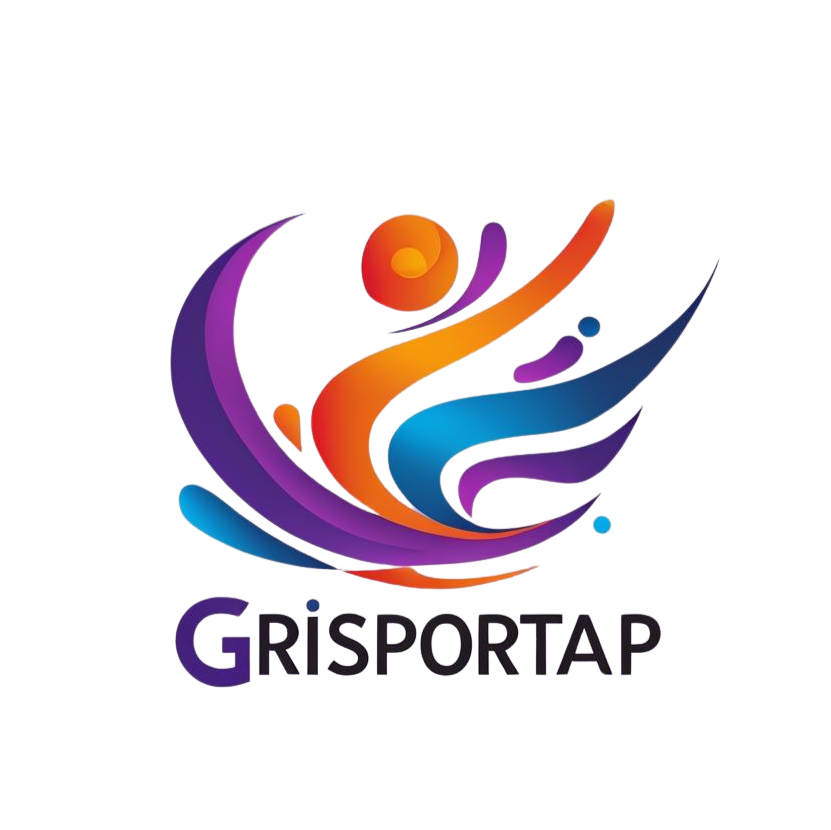Dance marketing tools can make your studio more visible and help you book classes, auditions, and events without wasting time.
You’ll get a practical overview that shows where each resource fits. Use Monday to schedule auditions and shoots, Planoly to plan Instagram grids, and Linktree to route your bio link to the right page.
For your site, consider Wix or WordPress with Elementor for a portfolio or studio website. TubeBuddy helps with YouTube topics and thumbnails. ConvertKit offers simple email segmentation and popups, while Leadpages builds focused landing pages.
Local tactics still matter: direct mail can drive visits and searches, referrals remain highly trusted, and Google Ad Grants give eligible nonprofits up to $10,000/month in search ads.
This article will map these options to outcomes you care about, respect your budget, and encourage testing so you can build a steady, professional presence.
Introduction: dance marketing tools to grow your studio and career in today’s landscape
This guide pairs software and street‑level approaches to help your studio reach the right people. Teens and parents use social platforms daily, but attention is split across feeds and inboxes. That makes a mixed approach—digital systems plus local outreach—the best way to build steady visibility.
Why tech and community matter for dancers and studios
Use tech to automate scheduling, posts, and email so you spend more time with families and performers. Email still performs well: recreational businesses average open rates around 41.8%, which shows the inbox converts.
How this roundup is organized (by goals and workflows)
We map recommendations by goal: plan, build your home base, capture interest, nurture with email, schedule posts, publish content post types, measure results, and energize referrals. Word of mouth remains powerful—88% trust friends—so combine systems with local outreach for compounding wins.
Read on to find simple strategies you can test, adapt, and scale without burning out.
Planning and workflow tools to save time and reduce guesswork
A simple planning routine saves you time and removes the guesswork from busy weeks.
Project and calendar management for auditions, shoots, and classes
Start with one tool you can maintain. Use Monday to centralize boards for auditions, video shoots, and classes. Assign owners, block call times, and add checklists so people know where to be and what to bring.
Reserve a recurring one-hour block—Sunday or Monday—to organize the week. This small habit protects your time and keeps rehearsals and shoots on track.
Content calendars that keep your posting consistent
Use a content calendar so every post aligns with your goals. Planoly previews your Instagram grid to avoid overposting one project. Tailwind schedules Instagram, Pinterest, and Facebook and often offers a free month for new users.
- Batch assets by theme—audition updates, behind-the-scenes, parent FAQs—so you always have ready content.
- Tie milestones to publish dates: set due dates for rehearsal footage, assign captions, and schedule posts in advance.
- Share calendars and checklists so dancers and collaborators know call times, props, and wardrobe without endless messages.
Track what worked and what slipped. Then adjust your workflow so the tool fits you—not the other way around—and so your studio saves time during busy seasons.
Website builders and landing pages that showcase your brand
Your website or a focused landing page should make the next action obvious. Choose a full site to showcase work and services, or use a landing page when you want one clear outcome: signups or ticket sales.
Portfolio and studio sites made simple (Wix, WordPress + Elementor)
If you need to launch fast, Wix builds a clean portfolio or studio site without code. Add a newsletter opt-in so visitors become contacts you can segment by age or style.
If you already run WordPress, Elementor refreshes layouts with templates in days. That keeps your site looking current and professional for parents and bookers.
High-converting landing pages for trials, camps, and events (Leadpages)
Use Leadpages for focused pages that drive registrations for free trials, summer programs, or masterclasses. Landing pages reduce distractions and push one action.
- One headline, one benefit list, one form, one CTA.
- Connect pages to ads and social posts, then measure conversions.
- Keep colors and fonts consistent so your studio brand feels trustworthy.
Link-in-bio and lead capture essentials
Treat your profile link as a front door: make it easy for followers to take the next step.
Make every profile click count with a single link hub. Use Linktree to group actions under one URL so people land on a clear menu instead of hunting through posts.
Make the hub work for you
Order links by priority and season. Put the timely offer at the top—free trial, schedule, or ticket sales—and archive old items so your accounts stay current.
- Label concisely: “Book a Free Trial,” “Summer Camp Details,” or “New Performance Video.”
- Route key paths: website, YouTube or latest media, and your booking email so discovery becomes conversion.
- Connect analytics and add UTM tags so you can attribute signups and improve future marketing.
Pro tip: Add the same link hub to Instagram, TikTok, X, and your email signature so every profile leads to the same studio actions.
Email marketing stack for acquisition, nurture, and loyalty
Start with an easy ESP so you can capture leads, send timely messages, and measure what actually drives signups. ConvertKit is beginner-friendly: its forms, popups, and embedded signups launch fast compared with Mailchimp or Constant Contact.
Beginner-friendly ESPs and segmentation
Choose an ESP that lets you tag interests—competition team, preschool classes, or seasonal camps. Segment into two core lists: prospective families and current families. That way your email feels relevant and actionable.
Welcome emails, sequences, and templates
Write a short welcome that gives value immediately: class times, dress code, and parking tips. Then build a 4-email sequence using simple templates: day 0 welcome, day 2 studio story, day 5 trial reminder, day 7 enrollment options.
Compliance and unsubscribe best practices
- Include a clear unsubscribe link on every send and honor opt-outs promptly.
- Avoid misleading subject lines to meet CAN-SPAM rules.
- Track opens and clicks, but focus on conversions like trial bookings.
Practical tip: automate follow-ups after trials—confirmation, reminder, thank you, and a small offer—so your team saves time and families feel supported.
For more on nurturing leads, see lead nurturing best practices.
Social media planning, scheduling, and creative assets
Start by mapping a simple content rhythm that keeps your accounts active without stress. A short plan prevents last-minute scrambling and helps your studio stay consistent.
Visual planning matters: use Planoly or Preview to lay out your grid, schedule posts and reels, and keep a balanced mix of content types.
Visual planning and scheduling
Planoly previews the grid so you avoid overposting one project. Preview lets you plan posts, stories, and reels on phone or desktop.
Both apps include hashtag helpers and caption ideas so you can test sets by theme or class level.
Design and brand assets with Canva
Build a lightweight brand kit in Canva—colors, fonts, and logos—and save reusable templates for posts, posters, and reels covers.
Use studio-specific template packs to speed weekly production and keep your visual identity consistent across accounts.
- Schedule a healthy mix each week: class highlights, student spotlights, behind-the-scenes, and announcements.
- Centralize scheduling with Tailwind to publish to Instagram, Pinterest, and Facebook.
- Curate hashtags with Preview’s tools and track simple metrics—saves, replies, and clicks to your link in bio.
“Focus on content that leads families to view schedules or book trials.”
Rotate studio spotlights, teacher intros, and parent FAQs so your feed answers real questions and builds trust with followers.
Video and YouTube optimization tools for performance content
A clear topic plan and bold thumbnail can turn a single shoot into weeks of useful content. Use simple systems so you spend less time editing and more time teaching.
Topic planning, thumbnails, and analytics (TubeBuddy)
Capture ideas with the Video Topic Planner. Log moments from rehearsals, Q&As, and showcases so your content aligns with real search interest. That keeps your channel practical and discoverable.
Write tight titles and descriptions. Say what viewers will learn or feel. Match that promise with bold thumbnail text and a clear image to boost clicks.
- Apply end screens and cards with templates so you’ll able to send viewers to a trial clip or booking page.
- Check audience retention to spot drop-off points and tighten your opening hook or trims.
- Repurpose one shoot into shorts, reels, and behind-the-scenes clips to extend reach across social media while saving time.
- Group videos into playlists by level or style so parents can quickly assess fit and contact your studio.
Practical tip: use TubeBuddy’s thumbnail generator and comment filters to speed uploads and protect your channel’s presence without extra work.
Analytics and competitive research to guide your content
Small, regular checks of account trends will tell you what content to repeat and what to drop. Start with a simple snapshot each week so you can act fast.
Benchmarking growth and discovering hashtags (SocialBlade)
Use SocialBlade to compare your accounts with studios or artists that serve similar people. Watch follower curves, posting cadence, and spikes in growth.
Note formats that perform—short clips, long videos, or photo carousels—and test similar ideas without copying. Collect hashtag ideas from consistent performers and group them into small sets to trial.
- Compare posting frequency and follower trends to set realistic goals.
- Track content that sparks comments and shares from parents and teens.
- Test hashtag sets and measure saves, reach, and followers gained.
- Build a monthly snapshot with a few core metrics to prioritize next month’s content.
Turn numbers into actions: if a post type wins, schedule two more similar posts next month. If DMs or bookings rise after a theme, shift more content toward that topic.
“Use analytics to choose what to amplify, not what to imitate.”
Studio management platforms that support marketing
When your admin system tracks interest and automates follow-ups, you turn casual visitors into enrolled students faster.
DanceStudio‑Pro blends operations with outreach so your day‑to‑day also fuels growth. Use the Lead Center to add campaign tags, record where a lead came from, and queue the right sequence—trial booked, reminder, thank you—without spreadsheets.
Lead tracking, campaigns, and push notifications
Make the platform work like a marketing ally. Send push notifications to families for last‑minute openings or enrollment deadlines so you fill classes predictably. Track social campaigns inside the Lead Center to see which posts drive trials.
- Tag interests: classify leads by age, class type, or goals so follow-ups feel personal.
- Automate emails: Robo‑Mailer handles routine messages to save you time and keep communication consistent.
- Gather UGC: request student clips with permission and feature highlights to build social proof for your dance studio.
“Review impact monthly—opens, clicks, trials, and registrations—then shift focus to channels that convert.”
Local marketing tools that build community offline
Local outreach still wins when you want reliable signups and real connections in your neighborhood. Use offline tactics to capture attention, then guide people online so you can track impact.
Direct mail, flyers, and where to place them
Direct mail prompts action: 57% of recipients visit websites, 53% search brands, and 46% look up reviews after receiving mail. Use seasonal postcards for registrations and include a short URL or QR code with UTM tracking.
Design notes: list your studio name, logo, class schedule, address, and contact clearly. Keep type large and the CTA obvious.
- Place flyers where families spend time: coffee shops, libraries, gyms, parks, community centers, grocery stores, and bus stops.
- Ask permission, rotate designs quarterly, and match the message to the season—summer camps, fall enrollment, or recital tickets.
- Use a dedicated landing page per campaign so you can measure which places drove visits and signups.
Local sponsorships and referral programs that compound trust
Sponsoring neighborhood events or youth teams earns logo placement and booth space. Greet attendees, offer a short demo class, and collect emails with a tablet.
“Referrals are trusted by 88% of people—make yours simple, fair, and trackable.”
- Offer a tuition credit when a referred friend enrolls and record it in DanceStudio‑Pro so you can automate thanks and discounts.
- Share event recaps on social media to extend your brand reach and invite dancers you met offline to stay connected online.
Search and ads: SEO and PPC foundations for studios
When people look for classes, a few simple SEO and PPC steps make your studio easier to find. About 71% of clicks go to page one of Google, so aim to appear there for local queries like “dance studios in [city].”
Local SEO, Google Business Profile, and keyword placement
Claim and complete your Google Business Profile with accurate NAP, categories, hours, and fresh photos. Keep reviews visible and respond promptly so families see an active, trustworthy listing.
Research how locals search and place those phrases naturally on your website—headlines, page titles, and FAQs. Use one clear word or phrase per page and build location pages if you serve multiple neighborhoods.
PPC basics and how grants can help nonprofits
Start PPC small. Bid on a handful of high‑intent terms, send traffic to a focused landing page, and measure conversions like trial signups or inquiries—not just clicks.
501(c)(3) groups: explore Google Ad Grants, which can provide up to $10,000/month for search ads. Combine that with modest Facebook and Instagram ads to target parents by radius and interest.
“Track conversions across search and social so you know which channels drive trials and enrollments.”
- Keep your GBP complete and updated so you appear in Maps and local packs.
- Place local keywords on the site’s pages and link each location to the right schedule or form.
- Use link tracking and UTM tags to attribute signups from search, social media, and ads.
Measure, iterate, repeat: test small budgets, refine search terms, and scale what yields real enrollments. These foundational strategies keep your outreach efficient and accountable.
Education and outsourcing: smart ways to level up
Combine short courses and selective freelancers to scale your creative output without stress.
Start by learning the basics so your team can ship a simple newsletter, polish a poster, or edit a short clip when speed matters. Skillshare offers free and paid classes that teach design, email sequences, and video editing so you build practical skills fast.
Skillshare classes to build in-house skills
Use short lessons as a practical scaffold. One person can master a workflow and then create a set of reusable templates for emails, social graphics, and landing pages.
Hiring specialized freelancers on Fiverr (what to check)
Hire freelancers for logos, advanced editing, or motion work when you need polish. Before you buy, review portfolios, check ratings, and ask for a small paid test to confirm style and communication.
- Define scope: rounds of edits, rights, and final file types up front so you’ll able to publish on time.
- Use templates: speed execution with Canva or email templates that match your studio brand.
- Keep a shortlist: trusted partners for recitals, promos, or rebrands so big ideas ship smoothly.
Mix learning with selective outsourcing—learn strategy in-house, then hire specialists for high-skill work.
Practical note: these resources and templates will help you test ideas quickly and scale using the right marketing tools without blowing the budget.
dance marketing tools: a quick-reference roundup by goal
Use this concise checklist to pick one or two options per goal and avoid piling on systems you won’t use.
Plan and schedule: centralize projects in Monday. Preview Instagram layouts with Planoly or Preview. Use Tailwind when you need broader multi‑platform scheduling.
Build your home base: choose Wix for a fast launch or WordPress + Elementor for flexible control. Keep pages current and nav simple so visitors convert.
Convert and capture: use Leadpages for trial signups, Linktree to route profile clicks, and ConvertKit plus DanceStudio‑Pro Robo‑Mailer to nurture leads and reminders.
- Create on-brand assets: Canva templates for posts, posters, and reels covers.
- Grow video reach: TubeBuddy for topics, thumbnails, and analytics.
- Measure and refine: SocialBlade to benchmark accounts and discover hashtag sets.
- Manage leads: DanceStudio‑Pro Lead Center to capture campaigns and automate follow-ups.
- Local outreach: direct mail, flyers, sponsorships, and referrals to drive foot traffic.
Tip: start with a minimal stack, test one campaign, then expand the list of resources that actually move enrollments.
How to build your stack in phases without overwhelm
Pick one clear campaign and build only what you’ll need to support it. Start small so you test ideas quickly and free up time for teaching and running the studio.
Start lean, measure, then expand
Begin with a single, focused goal—like summer programs or back‑to‑school signups—and use simple systems that prove results.

- Phase 1: Launch essentials. One-page site or a Leadpages landing page, a Linktree hub, and a basic Canva content calendar. This gets you present and consistent fast.
- Phase 2: Capture and nurture. Add ConvertKit for forms, tags, and a short welcome sequence. Automate trial confirmations and reminders so you save time each week.
- Phase 3: Streamline production. Introduce Tailwind or Preview for scheduling and standardize Canva templates to make content repeatable.
- Phase 4: Measure and refine. Layer in TubeBuddy for video, SocialBlade for benchmarks, and DanceStudio‑Pro Lead Center to remove guesswork from decisions.
- Phase 5: Test ads wisely. Run PPC on one high‑intent keyword and one focused page. Pause what underperforms and reinvest in what works.
Plan campaigns around seasons—recitals, summer programs, and enrollment windows—and review results monthly. Keep the stack small until something becomes a bottleneck; add only what you’ll need to fix that one thing.
Practical tip: use free trials (Leadpages, Tailwind) and free Canva calendars to validate a campaign before committing to subscriptions.
Conclusion
End with a reminder that small, steady improvements compound into lasting growth.
Focus on consistency. Build a reliable home base, keep your Google Business Profile current, and use DanceStudio‑Pro to track and automate follow-ups so your presence grows predictably.
Combine social media and email so each channel supports the other. Use a living list of resources and revisit it each season. Add or remove options based on measured impact, not trends.
Respect compliance (CAN‑SPAM), honor unsubscribes, and ask for reviews to build trust for your dance studio. When you hit limits, seek qualified help for design, ads, or video so you protect your budget and brand.
Keep learning, practice responsibly, and iterate. Small steps done well will help your long‑term results more than one big push ever will.



